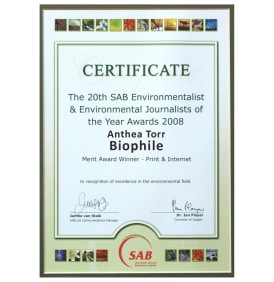On my return from South Africa to Europe in January 2005 I had a 5-day stopover in Namibia and knew this was my chance. I landed on a Sunday Morning in Windhoek without any idea how to get from there close to the boarder of Angola where the Himba lived, over 1000 miles away. But I had to follow my calling.
I sat down to pray for guidance and it was not very long until some German girls arrived. They sat next to me and started to giggle, wondering what I was carrying in my 2 Meter long suitcase on wheels. I revealed the secret to them, explaining that I was a musician playing different indigenous instruments from tribes of almost every continent. The 1 meter 50 long most ancient wind instrument on the planet was not easy to carry around.
Only when travelling with the heavy and bulky load, I wondered why I had specialised not just in the Native American Flute but also in the Didgeridoo of the Australian Aboriginals. As soon as I was playing it though, experiencing how the sacred sound was touching people in a healing way, all of that was forgotten and only gratitude remained.
The German Girls boyfriends arrived, who told me that they were about to rent two 4wds for a Safari through Namibia. They had arranged to be picked up by the car rental company and I decided to join them to see whether I could rent a 4Wd, too.
A 3rd generation German-Namibian met us with his big belly, dark ray bans and a raspy low voice hustling that it was no problem. While he was sorting out the German couples, I was looking through my papers but could neither find my drivers license nor credit card.
I thought to myself they’d never rent out a 4WD to me without papers so I told him: “Look, I forgot my credit card and license – I guess I have to leave…” He replied with his rough voice: “What is it you really want?” I said: “I want to meet the Himba but I only have 5 days. I don’t want to meet them as a regular tourist though. I want to meet their elders and play my instruments for them.”
He looked at me for a moment suspiciously but said then: “You know what, I don’t like Windhoek – I like it up there in Kaokoland. I will drive you!”
The next day early morning I was on my way to northern Namibia with Armin driving a Toyota Hi-Lux packed with food, corn meal and tobacco for the Himba. After an all day-long drive on dusty gravel and Mountain Zebras crossing our way, we set up camp at Hot springs that night. Nothing tastes better than a hot butternut soup cooked on open fire after such a day. Swallows displayed their acrobatics and weaverbirds their weaving skills while we bathed in the natural pools of warm water before continuing our journey closer to the land of the Himba.
Armin’s friend Ibrahim of the Herero joined us from the Warm water spring onwards to be our translator for the Himba. After many more hours through the ancient landscape we met our first Himba. He was walking gracefully along the road and was grateful when we stopped to offer him some tobacco and sniff, which I understood was much appreciated by the men and elder woman. His simple dignity had something royal and I felt that he was a good representative of the Himba Nation and our gatekeeper to the land of the Himba.
We travelled through the city Opuwo, which displayed a sad picture of the western world clashing with the ancient traditional ways of the Himba. The influence of white sugar and alcohol is poison for all indigenous people and so for the Himba as well. While the Himba women keep their dignity by wearing their traditional red ochre, metal jewellery and goat skin skirts, many of the Himba men start wearing western close and look like bums with torn dirty blazers and coca cola t-shirts.
Some of the younger generations who have gone to school started wearing the Herero costumes with long colonial style skirts and creative triangular headdresses or cheap synthetic western clothes thrown together colourfully. Blinded by the material wealth and junk food of the western world they feel more “civilised” this way and don’t realise that if they turn their backs to the traditional life-style of the Himba, it is only a question of time when this last authentic tribe of southern Africa is gone forever.
Even though there has been international attention and opposition towards the planned construction of a hydroelectric dam at the Epupa falls, the power hungry officials of the Namibian Government are continuing to build tar roads leading up towards Epupa. The consequence of the built dam will cut deeply into the traditional life of the Himba, flooding not just their nomadic grazing grounds but also their sacred ancestral burial grounds, which are a very important part of their lives. If the Government continues building the dam, the last 7000 traditional Himba will most definitely vanish within the next 10 to 15 years or so.
We declare old ruins and buildings world heritage – why not our last authentic tribal people of the earth?
Since there is already a huge dam being built in the Congo, with the capacity to feed the whole continent of Africa with electricity, there is no real need to build the dam at the Epupa falls. Most electricity at this stage is fed into Namibia from South Africa with some energy generated in the country itself.
On the way further north towards the boarder of Angola, Himba children would wave from the side of the road hoping for some sweets. Whenever we did stop there were eager hands stretched out for white sugar and sweets already displaying the addictive effect of toxic western junk food. After witnessing the damaging effect, I chose to only give fruits, nuts and honey besides cornmeal to the Himba . It was delightful to see how they enjoyed the honey I poured into their hands. Whenever I was asked for sweets or sugar I showed a picture of terribly rotten teeth I had printed out to re-educate the Himba.
Even though contact with any western world representative might influence the Himba, I understood that a respectful, interested and conscious tourism might be the only ally to help preserve their culture. The government does not seem to care much about the living treasure these people are.
The sun was nearly setting when we were guided to drive closer to a traditional Himba Kraal on the way to Epembe. When we arrived at the gates of the fenced off circular settlement hosting cob style clay huts, cattle and goats in the centre, the headmen of the Kraal arrived. After offering tobacco, sniff, cornmeal, and some respectful palaver, the chief offered us to set up camp not far from the entrance to his Kraal. The Himba live in family clans with up to 15 sometimes 20 or more relatives and children.
We set up camp and started the fire just before sunset while the full moon rose into the starry night sky. Beetroot, sweet potatoes and butternut were on the menu and it did not take long before the children and young Himba came to join us. We shared the food and after all bellies were full, we shared music. First I played the Didgeridoo and then the Native American Flute, which they absolutely loved. They wanted to hear it again and again. Then the Himba clapped their hands together in a special rhythm and sang their magical songs into the night for us.
It was incredibly amazing and beautiful. I took photos of the Himba at the fire which came out magically because there was magic between us and trust, respect and love. I felt like Curtis at the turn of the last century taking pictures of a vanishing race.
The Himba have a lot of the early Native American people. They share a similar beauty, dignity, friendliness and a mystic aura of people living in true harmony with nature.
In the daytime I visited the gardens of the Himba where they planted corn, beans and pumpkin – the “3 sisters” how many of the Native American tribes call them cause they grow in symbiosis. As a “Kokopelli” I brought organic seeds of different kinds of the “3 sisters” to them and the women working in the gardens were very happy and even more so when I played my flute to awaken the seeds. The simplicity and beauty in which the Himba lived touched my heart. The men herd the cattle while the woman work in the garden and care for the children. Once upon a time our ancestors must have lived in such harmony with one another and nature too.
The 2 days and 2 nights around the full moon with the Himba were timeless and carved deep into my heart. I did not want to leave and knew I had to come back soon. A full year had to pass before I returned. I was welcomed back as their “Cousin” as the eldest daughter of the chief called me when I asked for permission to set up camp again close to them.
“You are our cousin – you are always welcome here!” She said and held my hand lovingly. This time there was more sharing of food and music and timeless beauty with the Himba. It was a difficult time for the hard working Himba, though because the riverbeds and gardens were dry and nothing was growing. The global major changes caused by pollution, exploitation of the Rainforests and resources of the planet create worldwide imbalance in weather patterns and seasons, effecting the Land of the Himba , too.
I interviewed the headmen and asked what was the most important thing for them and how could we help? By sunrise he took us to the sacred fire through which they communicate with the creator and the ancestors who walked the land before them. Then he told me that what they really needed was water. So we went to dowse for water and found water close to their Kraal 11 metres deep down in the earth.
We offered to gather financial resources from friends and sponsors who want to contribute to the survival of the Himba through the building of wells for permanent water. We also gathered in circle to pray for rain in Namibia and the land of the Himba.
When we left, a Himba woman much like a priestess send us on our journey with the words: “This land is sacred. Please be gentle with this land. Do not speak bad, do not argue. When you meet an obstacle, just take the challenge to overcome it with grace and dignity. You are walking on holy land!”
I was giving thanks and praises to the One when I heard that after we left it was raining like never before and the dry and burned land became green and fertile. Maybe our prayers helped. But prayers have to be lived in order to really work and to make a real difference. Therefore we ask you for your contribution.
For details on how you can support the Himba Water Project
Please CONTACT:
Kailash Kokopelli
[email protected]
078 2929200
INNER WORLD MUSIC
www.kailash-kokopelli.com
www.myspace.com/kailashkokopelli
www.sanctuary-retreat.org
SIMILAR ARTICLES
- A Farm in the Kouga So, spring caught us by surprise in this beautiful environment, not only with blazing hot weather, but also blossoms on our almond trees, birds and…
- North America’s largest solar-electric powerplant switched on North America’s largest solar photovoltaic system is now running and generating power — about 30 million kilowatt-hours of electricity annually. The 14 megawatt power plant…
- Amazon tribe enlists Google You may know it as Google, but in bamboo-and-thatch roundhouses deep in the Amazon rainforest the iconic brand goes by another name. The Surui people,…
- The Altimarians are here It is my pleasure and joy to announce that the 12 environmental scientists from the planet Altimar have now arrived on Earth! Their mission is…
- The Ubuntu Youth Project Lerato is a bright, pretty girl who consistently wins prizes at school for her academic progress. Like most of her fellow students, however, she comes…
- Thre Great Awakening The consciousness of this earth is currently undergoing a revolutionary change. It is a renaissance, an enlightenment, an awakening like no other. It is the…
No comments yet.
Leave a comment
CURRENT ISSUE

Issue 29 of Biophile is going electronic and will be available soon. It will also be available to our international readers. Stay tuned or contact us for more details! find out more
EDITORIAL
I was just checking the website of the SEXPO which has just visited SA, this is what the Cape Town site says. . . . “The world’s largest Health, Sexuality and Lifestyle expo is coming back to Slaapstad and it’s bigger and sexier than ever! continue reading
ABOUT BIOPHILE
Biophile magazine is published every two months by Biophile cc. The magazine is edited by Chris Lautenbach, while subscriptions and advertising are managed by Lindsay Mitchell
The telephone number is 021 789 0694 and you can send faxes to 086 514 9668 and letters to PO Box 39277 Capricorn Square 7948.
ECOTELLY
Visit Ecotelly.com for more videos
AWARD

Biophile recently received recognition for its contribution to the print & internet category at the 20th SAB Environmentalist & Environmental Journalists of the year Awards. Congratulations to a dedicated team!
SPONSOR



